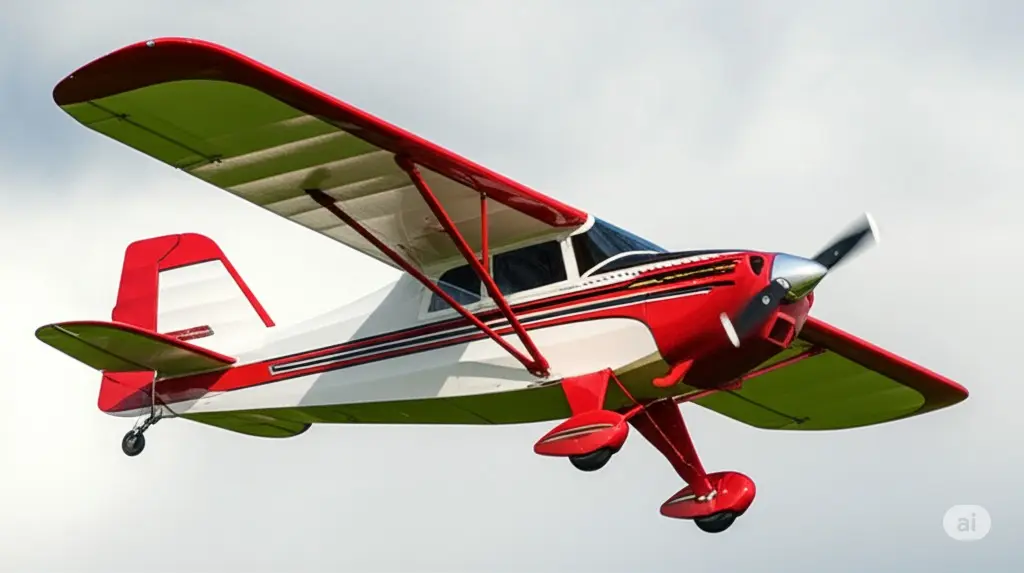
Ready to take to the skies? Buying your first RC (Radio-Controlled) airplane is an exciting step into the world of model aviation. Whether you’re dreaming of soaring loops, peaceful glides, or just mastering the basics of flight, choosing the right RC airplane makes all the difference.
Before you launch into the hobby, here’s what you need to know to make a smart, safe, and fun first purchase.
1. Start with a Trainer Plane
Not all RC planes are created equal — and as a beginner, you need a model designed for learning. Trainer planes are built to be forgiving, stable, and easy to fly.
Look for:
- High-wing design (wings mounted above the fuselage for better stability)
- Durable foam construction (EPO or EPP foam can handle crashes better)
- Self-leveling features or gyros to help keep the plane flying straight
These features help you focus on learning without worrying about flipping the plane every few seconds.
2. Electric vs. Gas-Powered RC Planes
- Electric planes are quieter, cleaner, and easier to manage — ideal for beginners.
- Gas or nitro planes have more power and realism, but they’re loud, require tuning, and are best for experienced flyers.
Recommendation: Start with an electric plane. They’re plug-and-play, low maintenance, and safer for new pilots.
3. Ready-to-Fly (RTF) vs. Almost-Ready-to-Fly (ARF) vs. Kits
Here’s what those terms mean:
- RTF (Ready-to-Fly): Includes everything — transmitter, battery, charger, and plane. Perfect for beginners.
- ARF (Almost-Ready-to-Fly): Needs some additional components (usually electronics or a transmitter).
- Kits: For advanced builders who enjoy assembling and customizing every part.
Go with an RTF model to get flying quickly with minimal setup.
4. How Many Channels Do You Need?
RC planes are controlled by channels (each channel controls a specific function). For basic flying, you’ll need:
- 3 channels: Throttle, rudder, and elevator (good for absolute beginners)
- 4 channels: Throttle, rudder, elevator, and ailerons (gives full control for realistic flight)
Start with a 3- or 4-channel plane depending on how quickly you want to progress.
5. Top Beginner-Friendly Brands
To get quality, durability, and support, stick to trusted RC airplane brands:
- HobbyZone – Excellent beginner planes with SAFE technology (self-leveling)
- E-flite – Offers both beginner and intermediate models
- VolantexRC – Affordable and good for starters
- FMS – Known for realism and build quality
6. Check Local Flying Rules & Clubs
Before you fly, make sure you:
- Know your local regulations (FAA registration may be required in some areas)
- Join a local RC flying club – You’ll get access to safe flying zones, tips, and even flight training
Flying in open fields, parks, or schoolyards is fun — but safety and legality come first.
7. Don’t Forget the Extras
To keep your RC flying fun and frustration-free, consider these accessories:
- Extra batteries – More batteries = more flight time
- Battery charger – A good charger can help batteries last longer
- Spare propellers – Crashes happen, be prepared
- Field tools – Small screwdriver set, glue, and tape can save the day
8. Flight Simulators Help a Lot
Before even touching your first plane, try using an RC flight simulator. These programs help you learn basic controls, recover from mistakes, and build muscle memory — all without crashing a real plane.
Popular sims include RealFlight, AeroFly, or even mobile apps designed for beginners.
Final Thoughts
Buying your first RC airplane is the start of a thrilling journey that blends technology, creativity, and the magic of flight. Start simple, stay patient, and don’t worry about the occasional crash — it’s all part of the learning process.
With the right trainer plane and a little practice, you’ll be flying high in no time.
Ready to take off? Your wings are waiting!
 RC Buyer
RC Buyer